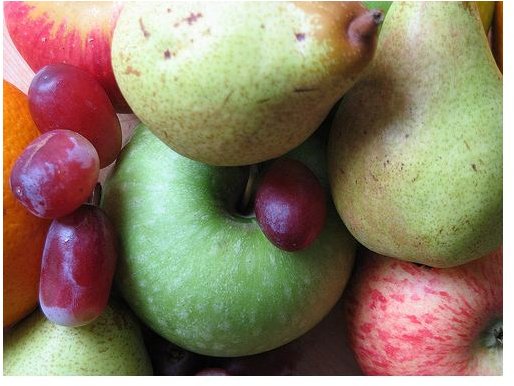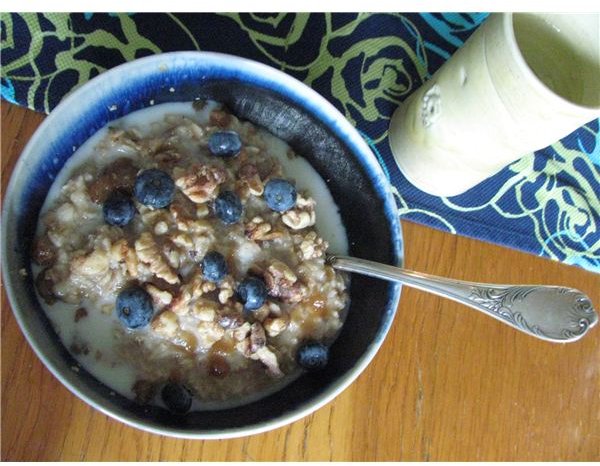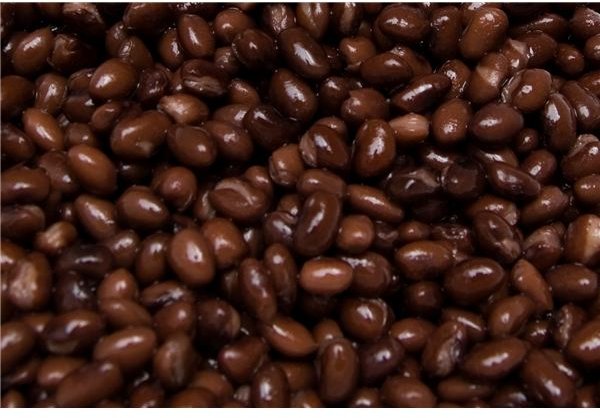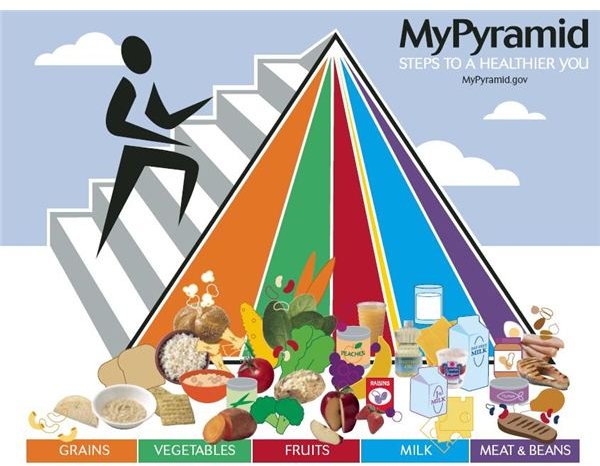Healthy Eating Guidelines: An Overview
The Food Pyramid
One good way to achieve healthy eating is by using the food pyramid.
The most popular food pyramid is USDA’s MyPyramid, introduced in 2005 to replace the old food pyramid. The Harvard School of Public Health has an alternative “Healthy Eating Pyramid.” Other good food pyramids are the Asian, Latin, Mediterranean, and vegetarian pyramids promoted by Oldways Preservation and Exchange Trust. All these food pyramids provide dietary guidelines for the optimal type and quantity of foods and suggestions for healthy eating choices based on such considerations.
Image Credit: Wikimedia Commons
Calorie Control
The average calorie intake for normal men and women is between 2,000 and 2,700 calories. The exact calories required depend on the energy the body requires to perform its functions, and this in turn depends on an individual’s level of activity.
A healthy lifestyle mandates constant weight, and the basis of weight change is calories in minus calories out or the net of total calories consumed less total calories burned remaining zero. Most people consume more calories than they burn, causing the body to store up the excess energy as body fat, which leads to overweight and its related complications.
Ways to control calories include:
- Active workouts and exercise to burn calories at a faster rate and help remove stress. Stress is one major factor that prompts people to overeat.
- Avoiding overeating.
- Eating small portions frequently rather than heavy meals. A lean cuisine sized entree of about 1/2 to 1 cup of food is optimal per sitting. Ordering an appetizer as the main dish, sharing meals, or eating from a smaller plate are other options.
- Substituting full meals for nutritious snacks
Fat

Consumption of fatty and oily foods is an integral part of a normal person’s diet, and about one-third of the daily calorie intake comes from fats.
The key to healthy eating is to ensure consumption of healthy, unsaturated fats such as the fat found in olive, canola, soy, corn, sunflower, peanut, and other vegetable oils, trans fat-free margarine, nuts, seeds, avocados, and fatty fish such as salmon. The fat to avoid includes harmful trans fat from partially hydrogenated oils and saturated fat found in red meat and butter.
Substituting healthy fats in place of highly processed carbohydrates helps improve cholesterol levels and protects the heart from sudden and potentially deadly rhythm problems.
The recommended fat intake is less than 30 percent of total daily calorie intake. Saturated fatty acids, and polyunsaturated fatty acids needs to be less than 10 percent of the daily calorie intake. The maximum recommended cholesterol intake is 300 milligrams per day.
Image Credit: Wikimedia Commons
Continue to Page 2 for healthy eating guidelines related to recommended foods.
Vegetables and Fruits

All healthy eating guidelines recommend a diet rich in vegetables and fruits owing to many reasons. Most fruits have a low glycemic index and give a feeling of fullness.
Fruits and vegetables provide many vitamins, minerals and phyto-compounds crucial for health. Most fruits, for instance, provide a rich source of dietary fiber that provides many health benefits such as lowering risk of diabetes and heart disease. Other health benefits include possible protection against a host of ailments such as cataracts, cancer, muscular degeneration, diverticulitis, heart attack, and stroke.
The best approach is to eat a variety of fruits and vegetables. The USDA recommends a mixture of three cups of dark green vegetables, two cups of orange vegetables, three cups of dry beans and peas, six cups of starchy vegetables, and seven cups of other vegetables a week. A 2,000-calorie diet requires about two cups of fruit a day.
Image Credit: flickr.com/LivingOS
Whole Grains

Most food pyramids recommend obtaining the required carbohydrates from whole grains such as oatmeal, whole wheat bread, and brown rice. Research suggests that such a diet provides the body with much needed energy, provides a feeling of fullness that discourages overeating, prevents development of type 2 diabetes, and protects against heart disease. The body does not digest whole grains as quickly as it digests highly processed carbohydrates such as white flour, and this prevents blood sugar and insulin levels from rising and falling quickly.
The USDA recommends consuming eight ounces of grain, including about three ounces of whole grain bread, cereal, crackers, rice, and or pasta, a day for a normal person.
Image Credit: Wikimedia Commons
Protein Foods

Protein serves to build and repair body tissues and remains indispensable for growth. The best high protein foods include fish, eggs, poultry, beans and nuts.
Research proves that the Omega-3 fatty acids found in fish reduce the risk of heart disease.
A common misconception regarding eggs relates to their high cholesterol levels. The high cholesterol levels notwithstanding, eggs still make for a healthier breakfast option compared to foods prepared in trans fat oil or made from refined flour. Egg whites that are especially high in protein and contain less cholesterol make a better option compared to whole eggs.
Chicken and turkey are also good sources of protein and are low in saturated fat.
Dried beans such as black beans, navy beans, garbanzos, and lentils, nuts such as almonds, walnuts, peanuts, hazelnut and pistachios, most seeds, and tofu make for excellent plant sources of protein, fiber, vitamins, and minerals.
The USDA recommends about six cups of meat or beans a day for an average person.
Image Credit: Wikimedia Commons
Diary Products

Most food pyramids recommend one or two servings of fortified diary products a day to provide the body with the calcium and vitamin D that keeps bones strong.
The most common sources of calcium are milk and cheese. These products, however, are also high in saturated fat. Three glasses of whole milk, the daily USDA recommended intake, contains as much saturated fat as 13 strips of cooked bacon. No-fat or low-fat dairy products or supplements make a better alternative. Cheddar cheese makes a good low fat option.
Most people require vitamin D supplements as a glass of milk provides just 100 IU of vitamin D and the recommended daily intake of vitamin D ranges from 1000 IU to 4000 IU.
Image Credit: flickr.com/vera46
Continue to Page 3 for healthy eating guidelines related to foods to avoid.
Sodium
The optimal sodium level is 2,300 milligrams, and high sodium levels raise the risk of high blood pressure, heart disease, and stroke.
Low sodium food options found among the popular food groups make healthy eating choices. Conversely, a diet dominated by processed foods high in sodium rank among the worst food choices.
Such food choices notwithstanding, even the average one and a half-teaspoons of table salt that 70 percent of U.S. adults consume a day constitutes high sodium levels. One good option is to use salsa, cilantro, rosemary, chives, thyme, and other herbs and spices as healthier alternatives to salt.
Foods to Avoid

White bread, white rice, white pasta, other refined grains, potatoes, sugary drinks, sweets, and all processed and canned food products, luncheon meals and baked goods are all popular food choices but make for unhealthy food choices. Such foods are high in carbohydrates and can cause blood sugar levels to shoot up rapidly, increasing the risk of weight gain, diabetes, heart disease, and other chronic disorders.
Most healthy eating guidelines also recommend avoidance of red meat that increases the risk of cancer and heart disease.
Last but not the least, home cooked food remains more nutritious than restaurant food, and helps avoid harmful food additives.
Image Credit: flickr.com/Michelle Kinsey Burns
Disclaimer
This article is for educational purposes only and does not intend to provide dietary advice. Please consult a certifified dietician or medical practitioner before acting on the advise found in this article. The optimal intake of calories, fat, carbs, and other nutrients varies from individual to indivdual, and depends on factors such as extent tof physical activity, height, weight, body mas, and other considerations.
References
- Harvard School of Public Health. “Food Pyramids: What Should You Really Eat?” https://www.hsph.harvard.edu/nutritionsource/what-should-you-eat/pyramid-full-story/index.html. Retrieved 06 January 2011.
- Harvard School of Public Health. “Salt and Sodium: The Bottom Line.” https://www.hsph.harvard.edu/nutritionsource/salt/index.html. Retrieved 06 January 2011.
- Wolfe,Barrie. “Healthy Eating Tips: Kick Start Your Weight Loss!” https://thinforlife.med.nyu.edu/healthy-eating-tips-fall-05. Retrieved 06 January 2011.
- MayoClinic. “Healthy eating: 10 ways to add pizzazz.” https://www.mayoclinic.com/health/healthy-eating/NU00641. Retrieved 06 January 2011
- The Franklin Institute. “Healthy Heart Diet.” https://www.fi.edu/learn/heart/healthy/diet.html. Retrieved 06 January 2011.
- Washington State Department of Health. “
- Healthy Eating Guidelines.” https://depts.washington.edu/waaction/plan/append/f.html. Retrieved 06 January 2011.
- United States Department of Agriculture. “MyPyramid.” https://www.mypyramid.gov/mypyramid/index.aspx. Retrieved 06 January 2011.
